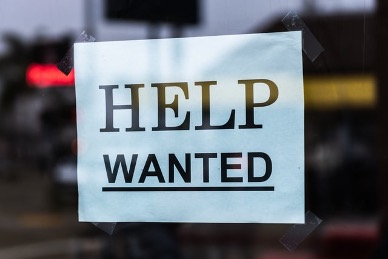Naomi Soldon is a Partner with Soldon McCoy, a law firm that specializes in representing organized labor. Ms. Soldon frequently blogs on employment law and provides an update on Wisconsin workforce news below.
Did you know that the workforce in Wisconsin is going through a major shift? From rapid wage growth to employee shortages, we're seeing unprecedented changes to the labor market in recent months with no signs of stopping.
These fluctuations are inevitably affecting investors, business owners, employees, and customers throughout the state and leading to larger questions about the future of “America's Dairyland."
Naomi Soldon gives a rundown of three recent developments that show the workforce in Wisconsin is going through some changes.
1. Wisconsin to Allow 14-year-olds to Work Late
The Wisconsin Senate has approved a bill that will allow 14 and 15-year-olds to work as late as 11 pm on certain days.
At present, Wisconsin follows federal employment laws under which no one under the age of 16 can start work before 7 a.m. or work past 7 p.m., except between June 1 and Labor Day, they can work until 9 p.m.
Under the plans set out in the bill, 14 and 15-year-olds will be able to work until 9:30 pm on nights before a school day. However, they can even work until 11 pm if there is no school the next day.
According to Ms. Soldon, supporters of the bill say it will help ease labor shortages that have impacted the entire state. Many sectors, in particular hospitality, have been struggling to find enough staff to support their businesses, and teen workers could fill some of these positions and increase the labor workforce.
However, there have been concerns over young people's well-being. Critics argue that this bill will increase exploitation of teenagers, as it will encourage business owners to push young people to work long hours.
At present, the bill will only apply to businesses with annual revenues less than $500,000. The bill will have to be approved by the Wisconsin Assembly before it can become law.
2. Labor Shortages Force US Retailers to Compete for Workers
In the wake of growing labor shortages across the US, retailers in Wisconsin are competing against each other to attract more recruits.
There are now over
1 million unfilled positions in the retail sector in the US, a figure that has risen sharply in recent months after coronavirus restrictions lifted across the country. Many retailers are under unprecedented pressure to attract seasonal workers before holiday shopping begins. For example, Kroger is currently seeking 20,000 workers, while retail giant Amazon is after as many as 125,000 workers.
Naomi Soldon notes that as part of its efforts to woo employees, Amazon is signing bonuses of up to $3,000, while Dollar General has offered some drivers starting bonuses of $5,000. In addition, Macy's is offering existing employees up to $500 for referring a friend to get a job with them. Aside from offering sign-on bonuses, retailers are also turning to employee benefits such as educational subsidies and discounted gym memberships to attract younger workers.
Recruiters are also streamlining their recruitment processes – in the case of Walmart, bringing the duration of the recruitment process down to as little as 24 hours – as part of efforts to get workers hired as quickly as possible.
The increased demand for seasonal workers has put pressure on wage rates, with many retailers upping their minimum wages to try and fill positions. For example, Walmart has increased the minimum wage at its Sam's Club chain from $11 to $15. Average hourly earnings in retail have increased over 10% since the start of 2020. However, these increases will not likely fix the problem because even $15 an hour is not a livable wage; which is likely why the Wisconsin republicans are looking to the past and setting their sights on increasing child labor.

3. Wisconsin Labor Force Participation Rate Increases
The
labor force participation rate in Wisconsin has increased in the past month, resulting in a growth of employment of over 5,000 jobs. Only 100 private-sector jobs were lost over the last 30 days.
The increase in labor force participation may be partly due to creating several high-skilled jobs in Wisconsin. For example, 54 new jobs are set to be created as part of a new $168 million facility by cheesemaker Agropur, who hopes that their new plant will be fully operational by 2023.
In addition to increased participation, the size of the labor force also increased by over 4,000 over the past month. However, the unemployment rate remained stubbornly high at 3.9%. The unemployment rate in Wisconsin remains significantly lower than the US-wide unemployment rate of 4.8%, though this has dropped considerably from 5.2% in August. The pre-crisis level of unemployment in the US was about 3.5%.
Final Thoughts
Each of these three stories shows that employers are facing increasing challenges to build and maintain the workforce that they need. The current labor supply shortage has led to increased wage pressures and means that many employers must fight harder to attract and retain talent, particularly in the retail and hospitality sectors.
However, efforts have been made in the state to expand the labor supply, and labor participation rates are increasing as a result. This suggests that pressures on the market may ease in the coming months, and sadly opportunities to recruit younger people may increase.
